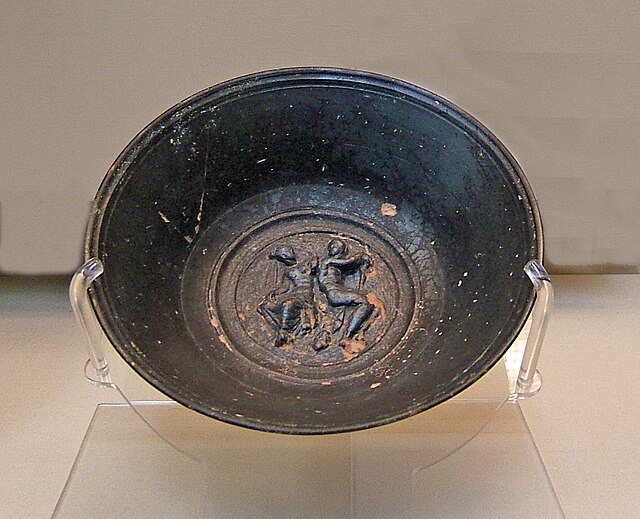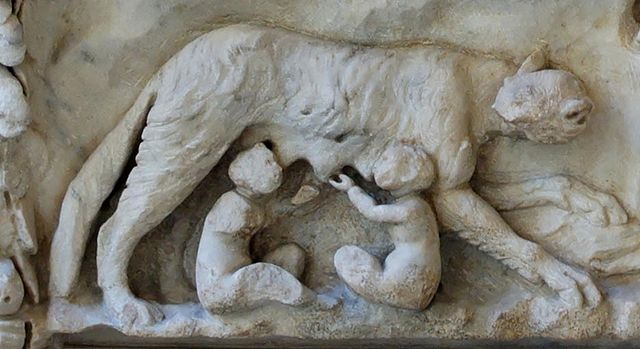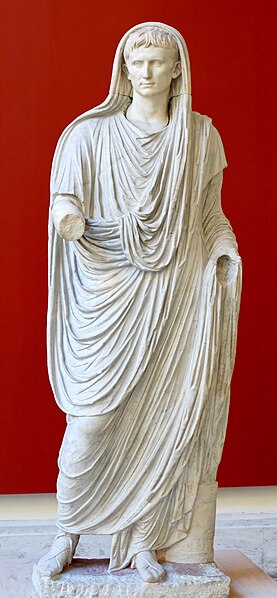In ancient Roman religion and mythology, Mars is the god of war and also an agricultural guardian, a combination characteristic of early Rome. He is the son of Jupiter and Juno, and was pre-eminent among the Roman army's military gods. Most of his festivals were held in March, the month named for him, and in October, the months which traditionally began and ended the season for both military campaigning and farming.
Statue of Mars from the Forum of Nerva, 2nd century AD. Based on an Augustan-era original that utilized a Hellenistic Greek model from the 4th century BC. Located at the Capitoline Museums in Rome, Italy.
Mars caresses Venus enthroned. Wall-painting in Pompeii, c. 20 BC – 50s AD
A relief depicting Mars and Venus on a black-slip bowl from Campania, Italy, 250–150 BCE, British Museum
She-wolf and twins Romulus and Remus from an altar to Venus and Mars
Religion in ancient Rome consisted of varying imperial and provincial religious practices, which were followed both by the people of Rome as well as those who were brought under its rule.
Defaced Dea Roma holding Victory and regarding an altar with a cornucopia and other offerings, copy of a relief panel from an altar or statue base
Augustus as Pontifex Maximus (Via Labicana Augustus)
Cybele enthroned, with lion, cornucopia and Mural crown. Roman marble, c. 50 AD (Getty Museum)
Relief panel from an altar to Venus and Mars depicting Romulus and Remus suckling the she-wolf, and gods representing Roman topography such as the Tiber and Palatine Hill








